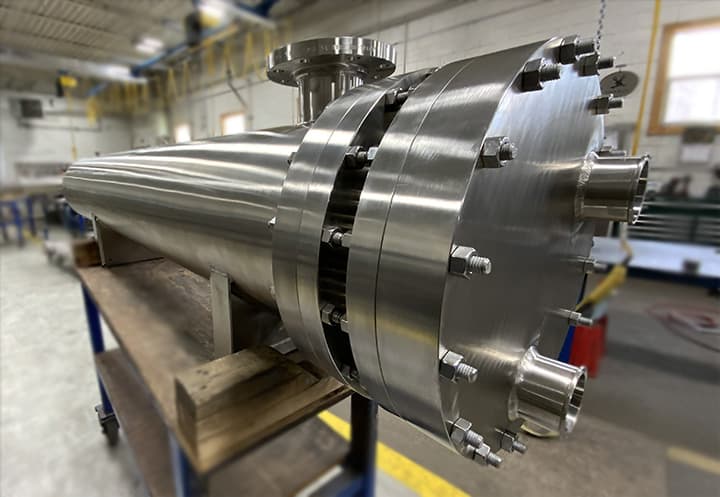Cross contamination is a shared concern at all stages of the food industry. Chefs need to make sure their fresh veggies are kept away from their raw meat; storage facilities strive to keep common allergenic foods like nuts separate from other ingredients; and food production plants must ensure products sent through their process equipment isn’t affected by harmful bacteria, chemicals or other items.
Shell and tube heat exchangers are popular in food production plants as a method to pasteurize fruit, vegetable or dairy products, or to achieve a desirable consistency, as in honey or maple syrup production. Cross contamination is also a risk factor in industries like pharmaceuticals and personal care.
It’s important that these important pieces of equipment don’t contribute to any form of cross contamination. If this were to occur, it could reduce plant efficiency, lead to a ruined batch of product or necessitate a recall. There are many different ways to reduce the chances of cross contamination in your food or pharmaceutical production facility. Here are a few:
Work with quality equipment fabricators
The materials used in the construction of your shell and tube heat exchangers play an important role in the quality, sanitation, cleaning requirements and lifespan of your equipment. Many food industry companies turn to stainless steel for its fouling resistance.
Choosing a stainless steel shell and tube heat exchanger is therefore a good step toward preventing cross contamination in your facility. However, you can take this one step further by finding out what sort of environment in which your shell and tube heat exchanger is fabricated.
Cross contamination isn’t just limited to food items; you can also cross-contaminate metals. As such, it’s worthwhile to find out if your stainless steel shell and tube heat exchanger is being made in a facility that also utilizes carbon steel. If it is, there’s always a chance that this metal, which is more prone to fouling, can contaminate your equipment.
At Enerquip, we value the integrity of stainless steel, which is why we don’t work with carbon steel. When you receive one of our heat exchangers, you can feel confident that it hasn’t been affected by this metal.
Strategically choose your tubes
When cross contamination does occur in a shell and tube heat exchanger, it may be caused by the shell-side fluid mixing with the tube-side fluid. To prevent this from happening, added barriers or an adjusted tube design can help.
Enerquip’s high purity shell and tube heat exchangers are fitted with double tubesheets, which reduces the risk of cross contamination of this type. These custom and standard pharma-grade exchangers are particularly useful for pharmaceutical, nutraceutical, animal health and personal care industries.
Double tube sheet configurations typically have a form of leak detection installed in the exchanger. If a leak were to occur in these models, the fluid should drain away from the exchanger and into a safety container rather than mixing with the other fluid, and alerts the operator that there is an issue to repair.
Understand pressure differentials
The engineers who create shell and tube heat exchangers must understand many complex formulas to know how the equipment will behave once it’s put to use. The pressure differential, or the difference between the pressures inside the exchanger, is an important one that relates to the likelihood of cross contamination. Typically, the pressure on the shellside would be less than inside the tubes. That way, if a leak springs, the product will flow into the heat transfer medium, rather than the medium mixing into the product and entering the tubes. This helps to keep the negative effects of a cross contamination incident as low as possible.
Regular inspections and cleaning
If there’s a chance of cross contamination in your equipment, it’s best to know sooner than later. Periodic visual inspections is the first step in identifying weak points and emerging problems that could lead to contamination, Business Standard pointed out. In your inspections, you might see early signs of leaks in your tubesheet or gaskets. If you catch this early, you may be able to replace or repair the damage before it leads to mixing fluids.
You may also see early signs of fouling. If fouling is allowed to continue for too long, it can lead to spoiled product. If you do, you’ll want to clean the exchanger and determine whether you can make any changes to your process to prevent fouling. This might mean exploring new options for heat transfer fluids, cleaning more frequently or changing your sanitation methods.
Whether you’ve experienced cross contamination at your facility or simply want to ensure you’re doing everything you can to prevent it, strategically choosing your shell and tube heat exchanger and making sure it’s kept in good condition can go a long way to help your efforts.

